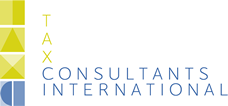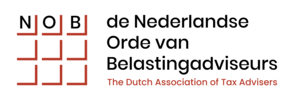Corporate Tax Services Corporate compliance Transfer Pricing Services Corporate Structuring Transfer Pricing Tax compliance
The Netherlands has specific policies for the allocation of costs within the Group which are based on the general OECD principles for the recharge of expenses for Intra-Group Services, but they do deviate on certain points.
Services within the Group (Intra-Group Services)
There is a wide range of services which can occur within an international group of companies.
In many cases these services are specifically documented by agreements and invoices are traceable in the company’s administration. However, sometimes there is no specific documentation available and these kind of services are more difficult to identify and detect. For instance because they are part of a wider range of services or delivery of goods, or because they are more or less inherent to the membership to an international group and tend not to be documented at all.
With regard to services received by a random member of a multinational group there are basically three scenarios that can occur:
- purchase from a third party service provider (legal and accounting);
- purchase from a group member;
- produce the service itself (central audit, financing advice, training personnel).
Services rendered by one group member of a multinational group to another group member are generally referred to as “intra-group services”.
Intra-group services must be appropriately identified, and associated costs appropriately allocated between the members of the group in accordance with the at arm’s length principle.
In order to identify the intra-group services actually provided, the so-called “benefit test” must be applied: the activity (service) must provide for an economic or commercial value for the recipient of the service to enhance or maintain its business position, for which it would normally be prepared to pay a remuneration or arrange for the service itself.
Activities performed solely because of an ownership interest in one or more other group members by the central or regional Headquarter Company (shareholder), and activities inherent to an legal entity’s own existence will generally not qualify as intra-group services, and by its nature cannot be charged on to group members. These costs are generally referred to as “shareholders cost”.
The at arm's length remuneration for intra-group services
Once the existence of an intra-group service is validated, the remuneration for this service and its fiscal acceptability must be determined.
As a generally accepted fundamental Dutch tax principle, the charge for intra-group services must be in accordance with the at arms’ length principle i.e. it should be the same as which would have been made between independent enterprises under comparable circumstances.
For the application of the arm’s length principle to a concrete situation, the a distinction must be made between direct methods and indirect methods. It will depend on the actual situation, specifically the outcome of the functional analysis, which method(s) are most appropriate for a specific service or category of services.
The direct methods focus on the comparison with the prices charged between unrelated parties for comparable services provided under comparable circumstances (the controlled uncontrolled price = CUP), or as a variety thereon, the price that is charged by a group member to non-related parties for comparable services received under comparable circumstances, or paid by the group member in the reverse situation.
The indirect charge methods are usually considered less preferential than a direct charge method, but can/must typically be applied when no CUP is available or not suitable for comparison or too burdensome to acquire.
An indirect method may be used to produce charges or allocate costs that are commensurate with the actual or reasonably expected benefits for the recipient of the service.
A typical example of an indirect method is the so-called cost plus method, whereby the remuneration or a particular service to category of services is increased with a certain profit mark up and then divided between all group members which are supposed to have benefitted by the service(s) provided on the basis of one or more predetermined allocation keys.
The allocation method used (the allocation key) must be based on relevant parameters, which can vary depending on the nature of the services provided and the specific circumstances of the case. For example, if it concerns the providing of payroll services, the number of employees can be a relevant allocation key, or when it concerns computer services, the relative expenditure on computer equipment can be relevant.
Once the most appropriate allocation key(s) has (have) been determined, it must be established whether or not the charge of these costs must include a profit mark up, and if so, how high this mark must be.
Determining the appropriate cost allocation mechanism - step by step
An functional analysis of the Group will ultimately have to form the basis for a cost allocation mechanism which is compatible with the Dutch (and the OECD) transfer pricing principles.
Once the contractual relationships between group members are properly identified and labeled, the following steps can be taken to come to an at arm's length cost allocation mechanism for intra-group services:
- determine the amount of shareholder cost (not recharged);
- identify the services to be covered by applicable Agreements underlying the transactions within the Group and determine allocable costs (categories) associated with these Agreements (costs charged out in accordance with the terms of the Agreements);
- Identify the services which can qualify as "Low Value Added Services – LVAS";
- Identify intra-group services or categories of intra-group services which do add value but which are not covered by the previous three categories (charged out directly).
Shareholder cost
The Netherlands has policy on the exclusion of so-called shareholders cost from re-charge to group members.
The costs which are being incurred by a legal entity as inherent to its legal form, and the costs which are associated with owning shares in other companies, are mutually qualified as shareholder cost.
As a general rule these expenses only benefit the legal entity itself and can therefore not be recharged to group members.
From the perspective of the group members, the membership to the group itself may certainly represent a certain value, but this will on itself not justify a separate remuneration unless there is an underlying service, like for instance a license for the use of the name or brand, or a bank guarantee for obtaining external financing.
Costs associated with Agreements
To the extent costs incurred must be allocated to the execution of a transaction covered by a particular agreement, the allocation of these costs must be included in at arm's length price for the transaction covered by this particular agreement.
No Agreement is the same, but there are generally accepted principles with regard to the scope of services covered by an Agreement.
Ultimately the factual circumstances will be decisive for a proper determination of the functions covered by the various Agreements in place, and the allocable costs in relation to that. The Agreement can be used for the documentation thereof but ultimately not the agreement, but the factual circumstances will be decisive.
Cost associated with Low Value Added Services
The Dutch transfer pricing principles also allow the simplified approach for Low Value Added Services.
The costs associated to the LVAS may be divided between all group members which can reasonably be expected to gain benefit from these services (on a category basis without the necessity to demonstrate the actual benefit on an individual basis) on the basis of one or more appropriate allocation keys. The profit mark up (if required) can be fixed at 5% and does not need to be benchmarked.
Instead of a service by service approach to determine an at arms' length price for each separate service, it is allowed to charge out qualifying LVAS's on a cost plus basis on the basis of appropriate allocation key(s) with essentially a profit mark up of 5%.
When the cost plus method is applied, the application of the benefit test and the benchmarking of the profit mark up, can create significant administrative burdens which may easily be perceived as too high in particular when it concerns low value adding services. The OECD recognized this problem and introduced the possibility for applying a simplified method for so-called Low Value Added Services (or “LVAS”). The essence of this simplified method is that for qualifying LVAS, the benefit test does not need to be applied in its entirety.
In order to qualify as LVAS the service provided must have the following characteristics:
- it must concern costs allocable to intra-group services,
- are of a supportive nature, and
- are not part of the core business of the group (i.e. not creating the profit earning activities or contributing to the economically significant activities of the group), and
- do not require the use of unique and valuable intangibles and do not lead to the creation thereof, and
- do not involve the assumption or control of substantial or significant risks by the service provider and do not give rise to creation of such significant risks.
The simplified charge mechanism for LVAS must be applied consistently to all costs relating to LVAS and must be applied to all group members in all countries supported by these activities.
The charge to any group member shall be sum of (1) cost of individual LVAS received + profit mark up, and (2) the share of pooled costs allocation on appropriate allocation key.
For all LVAS the mark up shall be 5%. No benchmark study required.
The LVAS mechanism must be documented by appropriate agreements and/or group policies.
Direct service charges
The costs which must be allocated to services which can be separately identified and as such are not covered by the aforementioned categories, must in essence be charged out on an individual basis.
A typical example of such specific services are the services of corporate senior management (other than the once directly associated with shareholders activities or the supervision of low value added services). These kind of services can be covered by a management fee, to be calculated on the basis of actual time spent multiplied with an appropriate hourly rate, and cost incurred.
For determining the most appropriate remuneration method the nature of the services and the circumstances surrounding the provision of these services (functional analysis) will be decisive.


.png)



